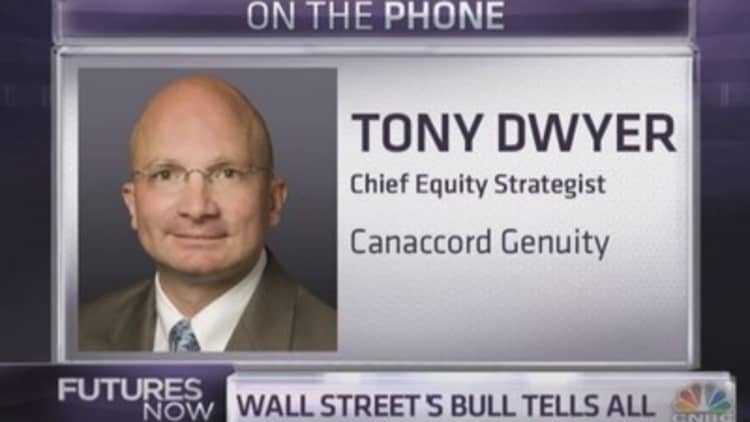
It's the latest calendar-based worry for investors: That the historically tricky month of September could bring trouble for stocks in 2014. But while the long-term historical metrics make the beginning of autumn look dangerous, Canaccord Genuity strategist Tony Dwyer says that concerns about the month are a bit overblown.
First of all, Dwyer grants that September may bring some trouble. Using data from SentimenTrader, he points out going back to 1929, in the 12 times that the S&P has risen more than 3 percent in August to hit a 52-week high (precisely the situation in the prior month) September has only been positive once. That means it's been a down month 92 percent of the time.
Read More Why analysts say September could be a big deal
However, the median loss in those situations has been a mere 1 percent, he adds. And even that number is "highly skewed" by massive losses in the Great Depression and in 1987.
And while suggesting that September could bring rockiness, Dwyer maintains a very bullish perspective on stocks as a whole.
"If the market gods give you a gift of weakness, with the fundamental and tactical backdrop that we have, I think you want to be adding to your core position in equities," he said Tuesday on CNBC's "Futures Now."
And even short-term traders might not want to step in the way of the rally.
September swoons could be "a reflection of a very strong August—people come back to work and say, 'OK, maybe my number are a little bit too high,'" he said, when asked for a possible explanation of the market phenomenon. But "either way, it's not something you want to bet on, because it gets reversed in the fourth quarter."
Indeed, after a September drop, the markets tend to close the year higher—rising 75 percent of the time in the fourth quarter, for an average gain of 2 percent, Dwyer said.
—By CNBC's Alex Rosenberg
Watch "Futures Now" Tuesdays and Thursdays at 1 p.m. ET exclusively on FuturesNow.CNBC.com!



